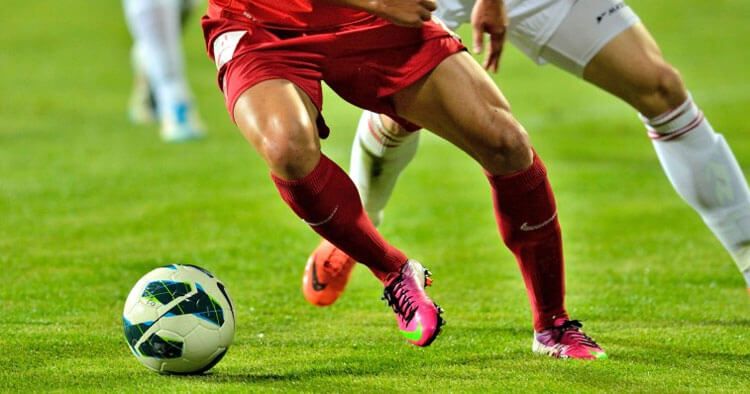Sports Injuries and Management
Patella Dislocation Painfully Common
Patella Dislocation An Adolescence Injury
A patella dislocation is a common injury. Typically the result of either a twisting injury, or from a direct impact to the knee. Impact when the knee is in a slightly bent position. Patella dislocation injuries are more common in the younger athletic population. With teenagers the most common age group to suffer this painful injury. More specifically, active female adolescents are the most likely demographic to dislocate their knee cap.Risk Factors For A Patella Dislocation
A patella dislocation can occur in an otherwise normal knee, when an abnormal force is exerted on the joint. Including but not limited to, a blow to the inside of the knee, pushing the kneecap laterally (outwards). The other cause is where the kneecap dislocates under less traumatic circumstances. Dislocates in relatively normal daily situations, due to abnormal joint anatomy. This abnormal anatomy being the predisposing factor.Potential Predisposing Factors To Suffering A Patella Dislocation:
There are a few underlying anatomical variations that can leave an individual with so called “abnormal anatomy”. Anatomy that may predispose them to suffering patella dislocations.- Generalised ligamentous laxity. Hypermobility is a known risk factor in knee cap dislocations
- Having valgus “knocked kneed” lower limb posture
- Quadriceps weakness. Specifically VMO weakness, the quadricep muscle that pulls the patella medially, against the typical lateral patella dislocation movement.
- Bony constraint variations. Having a “small” knee cap, or shallow groove that the kneecap slides up and down in. These can both increase the risk of dislocations.
The Presentation Of A Dislocated Patella
Diagnosis of a dislocated knee cap is fairly obvious when observing the knee. In the acute phase where the individual has a dislocated patella, there will be a bulge on the outside (lateral) part of the knee. This is the kneecap pushed out of its groove.A dislocated kneecap will often self reduce (relocate) when the individual attempts to straighten their knee. Once “reduced” and the kneecap rests back in the groove. Following dislocation the knee will often become very swollen and tender. Specifically tender when palpating the inside border of the kneecap. The location where the tissues have torn. To manage the pain, individuals will generally look to avoid any bending of their knee in the coming days (weeks). Specifically taking load on their knee, such as going up and downstairs will be painful. There may also be an underlying “fear” that the kneecap feels vulnerable to dislocate again, further limiting activity.
Kneecap Dislocation Can Increase The Risk Of Arthritis
When the kneecap is forcefully “pushed out” of its groove in a dislocation, this trauma can result in cartilage damage. Damage to the patella, or the groove itself. This trauma to the joint cartilage can lead to in an increased risk of patellofemoral (knee cap) arthritis down the line. The more loading that is carried out on an previously injured joint following any trauma, the more likely OA will be a feature at some stage in the future. As well as an increased risk of osteoarthritis following joint trauma, individuals who dislocate their kneecap may also experience ongoing symptoms. Including pain, restricted movement, feelings of weakness around the knee, subjective feelings of instability, or repeat dislocations…Management Of A Patella Dislocation
Due to the potential risk for repeat dislocations and ongoing issues noted above, it is essential following a dislocation patients have an X-ray. This is to assess the injury itself as well as risk factors for repeat dislocations and factors that could lead to a poor long term outcome. An MRI is also useful following dislocation to look at things that cannot be visualized via X-ray. Helping grade the severity of any soft tissue and cartilage damage.Surgery is considered with a kneecap dislocation if the individual is young and active. In this situation surgery may be used in an attempt to aid a full return to sport. As well as reduce the likelihood of any future dislocations. However, if the individual lives a more sedentary lifestyle, they may be managed more conservatively. This can include knee splints/ knee bracing and physiotherapy. The most desirable approach taken will be influenced by a number of factors, including; the number of previous dislocations, activity levels and the presence (or absence) of any risk factors. Risk factors will need to be addressed, and it may be viable to address them with move conservative methods like physiotherapy. However, sometimes more invasive surgical methods may be the most appropriate approach.
Disclaimer: Sydney Physio Clinic does not endorse any treatments, procedures, products mentioned. This information is provided as an educational service and is not intended to serve as medical advice. Anyone seeking specific medical advice or assistance on Patella Dislocation Painfully Common should consult his or her general practitioner, physiotherapist or otherwise appropriately skilled practitioner.


